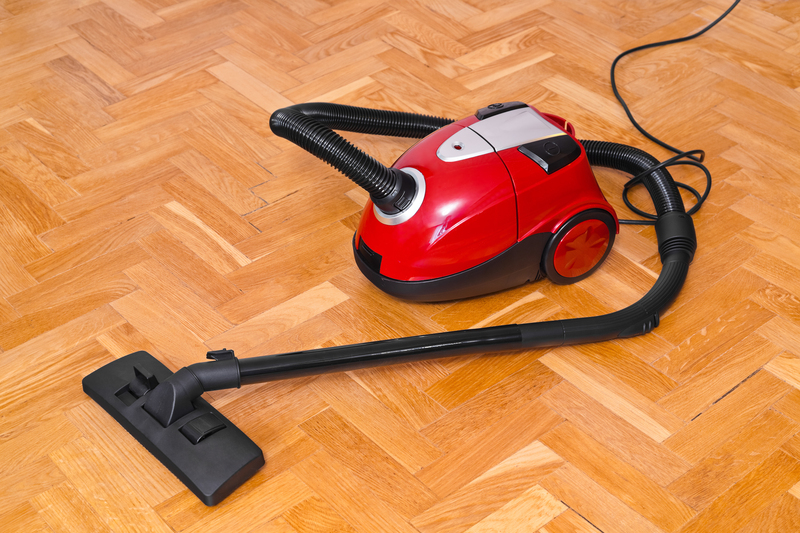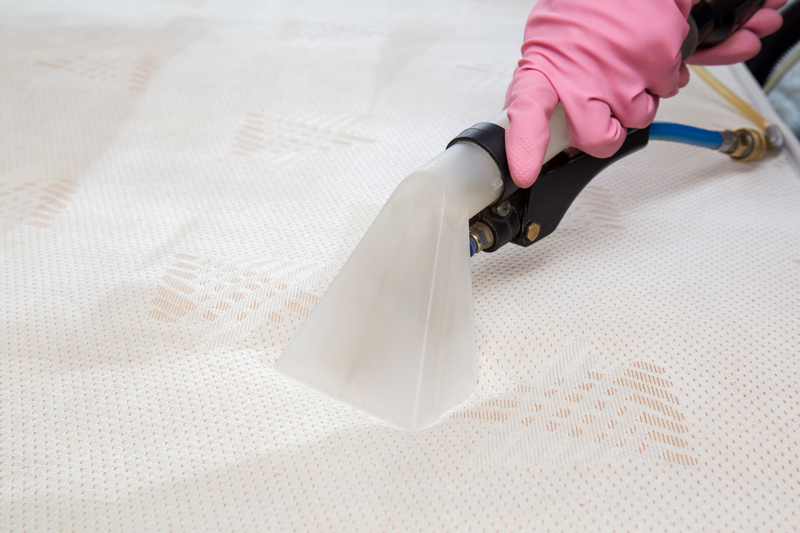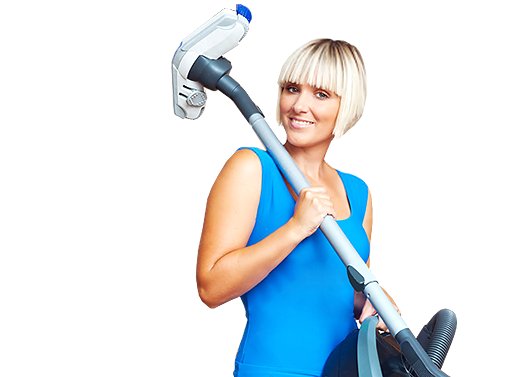The Essential Guide to Maintaining Air Quality at Home
Posted on 21/06/2025
The Essential Guide to Maintaining Air Quality at Home
Indoor air quality is a crucial aspect of a healthy lifestyle that people often overlook. As we spend more time indoors, especially in our homes, understanding and managing the air quality can significantly impact our well-being. This comprehensive guide will walk you through practical steps and expert advice to keep the air in your home clean, fresh, and safe to breathe.
Why Is Home Air Quality Important?
According to the Environmental Protection Agency (EPA), indoor air can be more polluted than outdoor air. Considering that we spend approximately 90% of our lives indoors, addressing household air quality is vital. Poor indoor air quality can cause or exacerbate respiratory conditions, allergies, fatigue, headaches, and even long-term health problems.
- Respiratory relief: Cleaner air supports healthy breathing, especially for asthma sufferers.
- Allergy reduction: Fewer allergens help keep symptoms at bay.
- Better sleep: Purified air improves sleep quality.
- Overall wellness: Fresher air promotes better concentration and mood.

Common Indoor Air Pollutants
To truly master maintaining air quality in your home, you must first understand the common sources of air pollution indoors:
- Mold and Mildew: Thrive in damp areas, releasing spores and toxins.
- Dust and Dust Mites: Accumulate in carpets, furniture, and bedding.
- Pet Dander: Small flakes of skin shed by animals.
- Volatile Organic Compounds (VOCs): Emitted from paints, finishes, cleaning products, and certain furnishings.
- Smoke: From tobacco, cooking, or burning candles and fireplaces.
- Carbon Monoxide & Radon: Invisible, odorless gases that can be harmful or even deadly.
How to Test Air Quality in Your Home
The first step toward optimal indoor air quality is assessing your current situation. Here's how you can test the air in your house:
- Purchase an Air Quality Monitor:
- These devices detect particulate matter (PM), VOCs, CO2, humidity, and more.
- Test for Radon:
- Use DIY kits or hire professionals to check for radon gas, especially if you live in an area at risk.
- Check for Mold:
- Look for visible mold growth or musty odors. Mold testing kits are available, but professionals can offer a more comprehensive assessment.
- Humidity Levels:
- A hygrometer can help you monitor if your home's humidity is within the recommended 30-50% range.
Effective Strategies for Enhancing Home Air Quality
Let's explore the most effective ways to maintain excellent air quality at home and ensure you are breathing the cleanest air possible.
1. Improve Your Home's Ventilation
- Open Windows Regularly: Allowing fresh air in is the simplest route to dispersing pollutants, especially during mild weather.
- Use Exhaust Fans: Turn on kitchen, bathroom, and laundry room fans to expel moisture and odors.
- Air Exchange Systems: Heat Recovery Ventilators (HRVs) or Energy Recovery Ventilators (ERVs) provide continuous filtration and fresh air without heat/energy loss.
2. Control Humidity Levels
- Prevent Mold & Mildew: Use dehumidifiers in damp areas like basements, and fix leaks promptly.
- Keep Humidity Balanced: Maintaining 30-50% humidity is ideal for healthy air quality.
- Houseplants: Some plants absorb humidity and filter toxins, enhancing air purity.
3. Regular Cleaning for Cleaner Air
- Vacuum Frequently: Choose a vacuum with a HEPA filter to trap fine particles and dust mites.
- Launder Bedding: Wash sheets, pillowcases, and blankets in hot water weekly to eliminate allergens.
- Dust Surfaces: Use damp microfiber cloths to avoid kicking up dust into the air.
- Declutter: The fewer items you have, the fewer surfaces dust can collect on.
4. Filter and Purify the Air
- Air Purifiers: HEPA air purifiers can significantly improve indoor air by removing over 99.97% of airborne particles.
- Change HVAC Filters: Replace or clean your heating and cooling system filters according to the manufacturer's instructions. Consider upgrading to MERV 13 or higher filters if your system allows.
- Use Exhaust Fans: Especially while cooking or showering to eliminate smoke and excess moisture.
5. Minimize Exposure to Chemicals and VOCs
- Choose Non-Toxic Products: Use natural cleaning products and low-VOC paints, adhesives, and furnishings. Read labels and opt for products certified as "green" or "eco-friendly."
- Avoid Aerosols and Synthetic Fragrances: These can add unnecessary chemicals to the air.
- Store Chemicals Properly: Keep paints, pesticides, and cleaning supplies tightly closed, and store them away from living spaces.
6. Ban Smoking Indoors
- No Tobacco Smoke Inside: There is no safe level of indoor cigarette smoke exposure. Smoking should always be done outdoors--preferably away from doors and windows.
- Consider Candles & Fireplaces: Use unscented, soy-based candles sparingly and ensure fireplaces are well-ventilated.
7. Maintain and Inspect Your Home Regularly
- Check for Leaks and Water Damage: Inspect roofs, walls, and plumbing for signs of leaks. Wet areas promote mold growth and degrade air quality.
- Monitor Gas Appliances: Ensure stoves, heaters, and fireplaces are vented properly and inspected routinely for carbon monoxide leaks.
- Test Smoke and CO Detectors: Replace batteries every six months for ongoing safety.
The Role of Houseplants in Indoor Air Quality
Many people wonder if houseplants truly purify air at home. Research, including NASA's Clean Air Study, has shown that certain houseplants can absorb toxins like formaldehyde and benzene. While you would need dozens to make a dramatic impact, strategically placed plants can complement other air improvement efforts.
- Best Air-Purifying Plants:
- Spider Plant
- Snake Plant (Mother-in-Law's Tongue)
- Peace Lily
- Bamboo Palm
- English Ivy
- Care Tips: Avoid overwatering, use organic soil, and dust leaves regularly.
- Note: Some plants can be toxic to pets. Choose wisely if you have animals at home.
Fighting Allergens and Triggers
How to Manage Allergens at Home
If you or your family members suffer from allergies, controlling indoor allergens is essential for better air quality at home. Common triggers include pollen, pet dander, dust mites, and mold spores. Here's how you can minimize their presence:
- Pet-Free Bedrooms: Keep pets out of bedrooms and off upholstered furniture.
- HEPA Filters: Use air purifiers with HEPA filters in bedrooms and main living areas.
- Frequent Washing: Wash curtains, rugs, and soft toys regularly.
- Control Pollen: During pollen season, keep windows closed and use air conditioning.
- Seal Gaps: Repair window and door gaps to prevent outdoor pollutants from entering.
Seasonal Tips for Maintaining Good Air Quality at Home
Spring & Summer
- Pollen Control: Change clothes and shower after spending time outdoors.
- Humidity Watch: Use dehumidifiers in humid climates to prevent mold.
- Open Windows: Ventilate during times of low outdoor air pollution.
Fall & Winter
- Filter Replacement: Change HVAC filters before using heating systems.
- Use Humidifiers: Prevent dry air that can irritate airways, but don't over-humidify.
- Be Aware of CO: Test and maintain carbon monoxide alarms due to increased use of gas appliances.
Smart Technology for Air Quality Management
Modern homes are embracing smart solutions to monitor and control indoor air quality. These can make maintaining healthy air more convenient and effective.
- Smart Air Quality Monitors: Devices also connect to your smartphone, offering real-time data and tips.
- Automatic Purifiers: Some air purifiers adjust settings automatically based on air quality readings.
- Integrated Smart Thermostats: Control humidity and air exchange settings remotely.

Frequently Asked Questions About Home Air Quality
How often should I change my air filters?
It's best to change HVAC filters every 1-3 months, depending on usage, pets, and allergy considerations. If using higher-grade filters, follow the manufacturer's recommendations.
Do air purifiers really make a difference?
Yes, especially models with HEPA filters, which can trap microscopic particles, allergens, and even some bacteria and viruses, thus improving air quality in the home.
Can I test for indoor air quality myself?
Absolutely! Air quality monitors, humidity meters, and radon testing kits are available for consumer use. For major concerns, consult a professional.
Are scented candles and air fresheners harmful?
Many release VOCs and fine particulates that may worsen indoor pollution. Opt for unscented, natural alternatives and ventilate the area well.
Is it safe to ventilate in urban environments?
Monitor local air quality indexes. If outdoor pollution is high, keep windows closed and rely on mechanical ventilation and filtration systems.
Conclusion: Create a Healthier Living Space
Maintaining good air quality at home is not just an occasional task--it's an ongoing commitment to you and your family's health. By following these practical strategies to improve and maintain healthy home air, you can dramatically reduce irritants and pollutants. Invest in proper ventilation, regular cleaning, air filtration, and smart technology for comprehensive results.
Prioritize air quality starting today, and enjoy the benefits of a safer, fresher, and more comfortable home environment year-round.
- Routinely test indoor air quality and act on the findings.
- Eliminate sources of pollution whenever possible.
- Upgrade HVAC systems and filters as needed.
- Introduce houseplants and embrace smart home air solutions.
Remember, every small step makes a significant difference. Breathe easier and live better by maintaining excellent air quality in your home!




